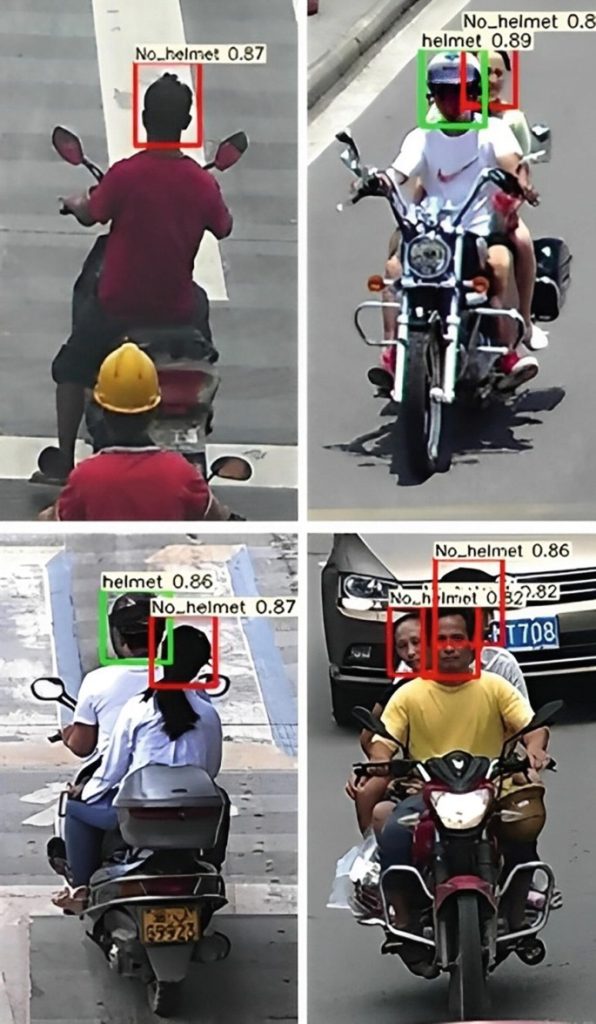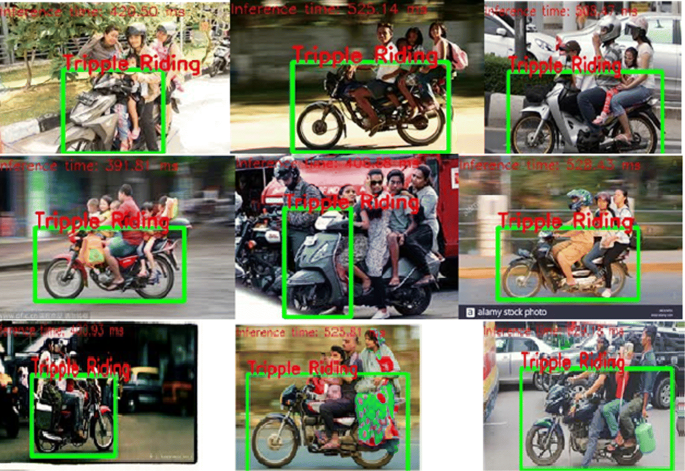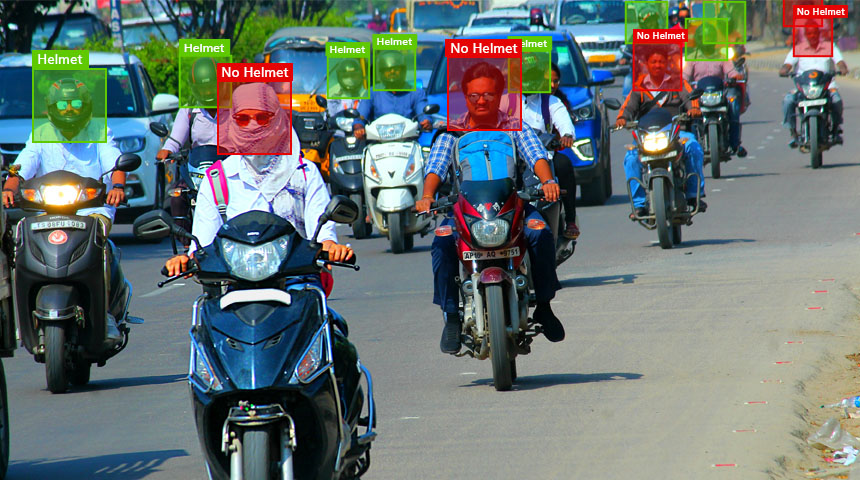Analyzing the Impact of Helmet and Triple Riding Detection Systems on Road Safety
The global concern over road safety has reached a critical juncture, with millions of lives lost or impacted annually due to traffic accidents. Among the myriad factors contributing to this grim reality, the persistent issues of helmet non-compliance and triple riding on two-wheelers stand out as major challenges. Fortunately, recent technological advancements have ushered in a new era of innovation aimed at tackling these issues head-on. Helmet and Triple Riding Detection Systems represent a groundbreaking solution designed to enhance road safety by enforcing compliance with helmet usage and passenger limits. This comprehensive article delves into the significance of these systems, explores their impact on road safety, and examines the challenges and opportunities associated with their widespread adoption.
Table of Contents
Understanding the Problem: Triple Riding and Helmet Non-compliance
Triple riding, the practice of three individuals riding on a two-wheeler designed for only two occupants, poses a significant risk to road safety. This reckless behavior not only exceeds the vehicle’s intended capacity but also compromises its stability and maneuverability, significantly increasing the likelihood of accidents. Furthermore, the failure to wear helmets, particularly by riders and passengers on motorcycles, exacerbates the risk of severe head injuries and fatalities in the event of a crash. Despite concerted efforts through awareness campaigns and regulatory mandates to promote helmet use and restrict triple riding, enforcement remains a persistent challenge in many regions.

Introducing Helmet and Triple Riding Detection Systems
Helmets and triple riding detection systems have emerged as technological breakthroughs in response to the pressing need for more effective enforcement measures. These innovative systems leverage a sophisticated blend of hardware and software components, including high-resolution cameras, advanced sensors, artificial intelligence algorithms, and seamless connectivity solutions, to monitor and enforce compliance with safety regulations in real-time. By deploying these systems across key locations prone to violations, authorities can effectively deter risky behavior and promote safer road practices.
Impact of Helmet and Triple Riding Detection Systems on Road Safety
Enhanced Compliance: The mere presence of detection systems serves as a powerful deterrent, encouraging riders and passengers to adhere to safety regulations regarding helmet usage and passenger limits. Studies have shown that the introduction of these systems leads to a noticeable increase in compliance rates, thereby reducing the incidence of violations.
Reduction in Accidents: By promoting widespread adherence to safety measures, helmet and triple riding detection systems play a pivotal role in mitigating the risk of road accidents. Accidents resulting from head injuries and loss of vehicle control due to overloading are significantly reduced, leading to tangible improvements in road safety outcomes.
Streamlined Enforcement: Traditional methods of enforcement, such as manual patrols and spot checks, are often resource-intensive and prone to human error. In contrast, Helmet and Triple Riding Detection Systems automate the monitoring and enforcement process, ensuring consistent and effective compliance with safety regulations across various locations and times.
Data-driven Insights: One of the most compelling advantages of these systems lies in their ability to generate actionable data insights. By analyzing patterns of non-compliance, identifying high-risk areas, and evaluating the effectiveness of interventions, authorities can make informed decisions and tailor their road safety strategies for maximum impact.

Challenges and Considerations
While the adoption of Helmet and Triple Riding Detection Systems holds immense promise, several challenges and considerations must be addressed:
Technological Limitations: The effectiveness of these systems hinges on various technological factors, including camera quality, algorithm accuracy, and connectivity reliability. Addressing these limitations is paramount to ensure the reliability and accuracy of detection results under diverse environmental conditions.
Privacy Concerns: The widespread deployment of surveillance technologies raises legitimate concerns regarding individual privacy rights. Striking a delicate balance between ensuring road safety and safeguarding privacy is essential in the design and implementation of these systems, necessitating robust data protection measures and transparent governance frameworks.
Cost and Infrastructure: The initial investment required for deploying and maintaining Helmet and Triple Riding Detection Systems can be substantial, particularly for regions with limited financial resources. Additionally, ensuring the availability of adequate infrastructure, such as network connectivity and power supply, is critical for the seamless operation of these systems on a large scale.

Future Directions
Despite the inherent challenges, ongoing advancements in technology and increasing awareness of road safety issues present numerous opportunities for further enhancing Helmet and Triple Riding Detection Systems:
Integration with Smart Infrastructure: The integration of detection systems with existing smart infrastructure, such as traffic signals and road signs, holds immense potential for optimizing their effectiveness. By leveraging real-time data and intelligent algorithms, authorities can deploy targeted interventions to prevent accidents and improve traffic management.
Advancements in Machine Learning and AI: Continued research and development in machine learning and artificial intelligence are poised to revolutionize the capabilities of detection systems. Future iterations of these systems may boast enhanced detection accuracy, robustness in diverse scenarios, and adaptive learning capabilities, thereby raising the bar for road safety enforcement standards.
Collaboration and Partnerships: Collaboration between government agencies, technology companies, academia, and other stakeholders is essential for driving innovation and overcoming implementation barriers. Public-private partnerships can facilitate the sharing of resources, expertise, and best practices, accelerating the widespread adoption of detection systems and ensuring their long-term sustainability.
Conclusion
Helmet and Triple Riding Detection Systems represent a paradigm shift in road safety enforcement, offering a potent blend of technological innovation and regulatory compliance. By promoting widespread adherence to helmet usage and passenger limits on two-wheelers, these systems have the potential to significantly reduce the incidence of road accidents and save countless lives. While challenges such as technological limitations and privacy concerns persist, concerted efforts towards collaboration, innovation, and policy refinement can pave the way for a safer and more secure transportation landscape. As we continue to harness the transformative power of technology in the pursuit of road safety, let us remain steadfast in our commitment to creating safer roads for all.

